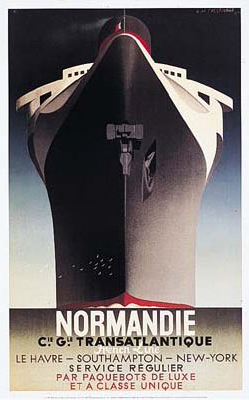The Museum of Retrospect
Mission
The Art Deco movement in art is one that is characterized by ornate and opulent designs that grab the eye with illusions to modern technologies and cultures. This period emerged in response to the ending of the Nouveau movement around the end of the first world war. The Art Deco movement started in France in the 1920s and spread to the rest of the world throughout the 30s and 40s. The style had a huge impact on the culture of the time by its extravagant paintings, sculptures, fashion, and architecture (including the Empire State Building). With its lavishly ornamented and symmetrical style, the Art Deco style represented wealth, glamour, and progress.
I would like to reacquaint my community with this movement because I would like to give them the opportunity go back to the 20s, 30s, and 40s even if it is just for an hour or so. When you are in my Art Deco museum, you aren't Phil from accounting, you are Phil: the heir of a stately mansion in upstate New York with an apartment in the city. I believe my community should be able to have easy access to art because it is a beautiful escape. By immersing my museum-goers in the Art Deco period, I hope to enlighten them to the more fabulous side of life that was so important during the time.
Public Relations/Publicity
My target audience is senior citizens. That is why I plan to have admission be free to those over 65. Because either them or their parents were actually in the culture, they should have the easiest access to it. For further pricing, adults are to pay $12, students $10, and children $8. Although senior citizens are my priority, I think students will be interested in the museum as well. Adolescents will be interested in the museum because they are interested in the fabulous party lifestyle that this period represents. I think my museum will be successful because it has something for everyone. Admission will pay for most of the museum's expenses and what we lack will be covered by our mysterious benefactor who is fascinated by Art Deco. I will have an Art Deco expert who will search for new collections that will change every 6 months. Advertising for my museum will be minimal with a few billboards at most. My hope is that the word of mouth and lack of advertising will create mystery and hype that you have to see to believe. The workers and tour guides at my museum will be ambassadors of the movement in their dress and their behavior. To get the full effect, I will hire acting students to be the tour guides so that the experience is genuine.
Collections
The collections in the museum will be separated into three different wings. These collections will be specific to one artist per wing. By doing this I will keep the viewers in one state of mind at a time. I hope this will get the viewers to appreciate the artist's work and what they did for the movement. My museum will consist of mostly paintings but with the changing of the collections, I may feature some artists that specialize in sculpture or architecture. My first collections will feature Tamara de Lempicka, Erte, and Cassandre.
Tamara de Lempicka
The Sleeping Girl (Kizette) I
1933
Oil on Wood Panel
Irene and Her Sister
1925
Oil on Canvas
Nana De Herrera
1929
Oil on Canvas
The Straw Hat
1930
Oil on Wood Panel
Erte
The Trapeze
1983
Serigraph
The Fishbowl
1977
Serigraph
The Zodiac, Sagittarius
1982
Serigraph
Cloudy Morning
1980
Serigraph
Cassandre
Normandie
1935
Stencil and airbrush on paper
Golden Club
1926
Stencil and airbrush on paper
Harper's Bazaar
1938
Stencil and Airbrush on Paper
Interior Design
The interior of the museum will be extremely ornate. From geometric carpet designs to 30s style light fixtures, the interior will be a very accurate representation of what a room of the art deco period would look like. There will also be instrumental jazzy music playing softly in the background. In order to not take away from the art work, there will be a textured and patterned all white panel that will go across the walls to hang the art work from. The works will be labeled simply and without any graphic technology of any kind. Because my target audience is senior citizens, one continuous bench will be right in front of the art work so they can spend some time with each piece. In the center of the three wings will be a large rotunda for the meeting of tours and a small cafe` and gift shop. In the middle of this rotunda will be a huge model of the spire of the Empire State Building which is so characteristic the Art Deco period.
Exterior Design
The exterior of the building will just be a simple mirror. Although this may seem to contradict the Art Deco style, it doesn't for my museum. In order to keep up my "you have to see it to believe it" standard, you can't have any hint of the extravagant explosion inside without going in to see it for yourself. By keeping this mystery alive, more people will be intrigued and come to visit the museum. To make room for the high ceilings, chandeliers, and other fixtures, the building is going to have to be relatively big.







































